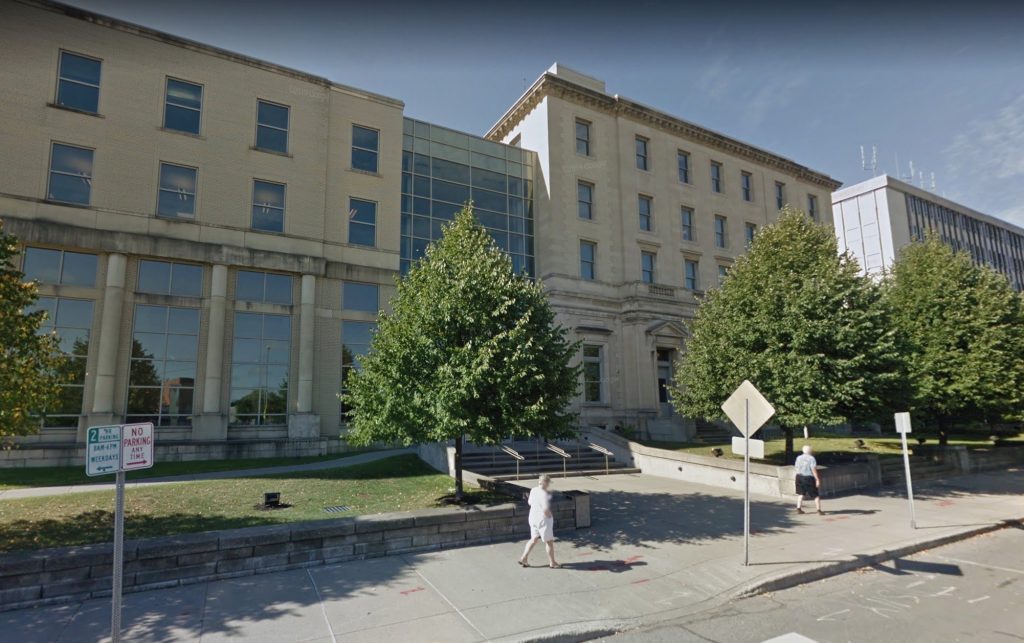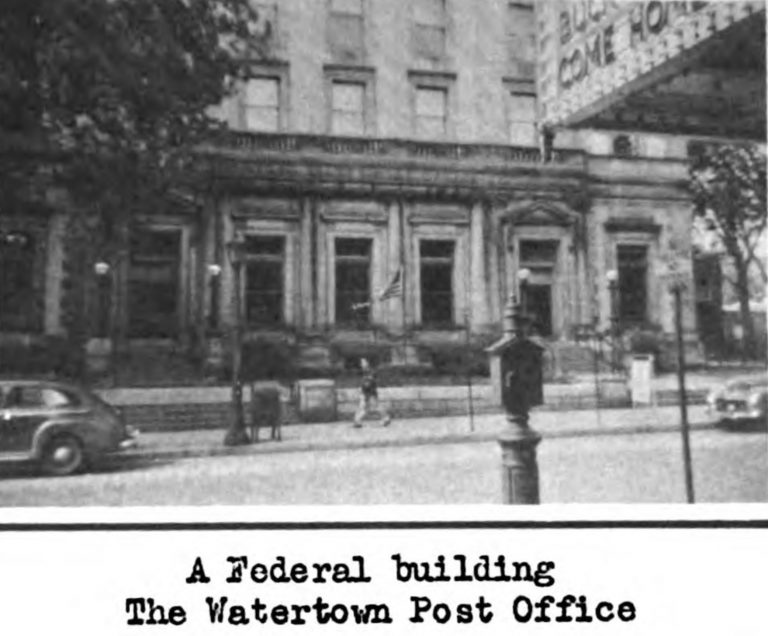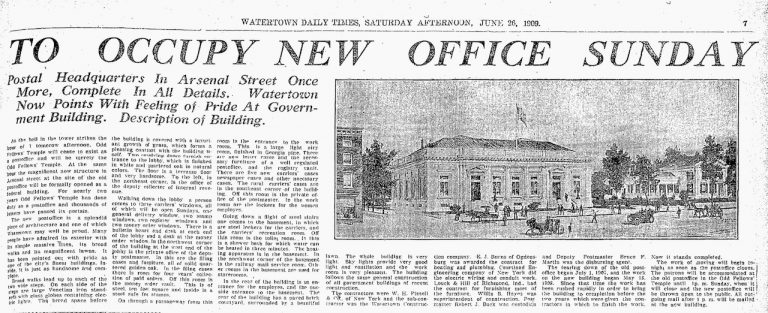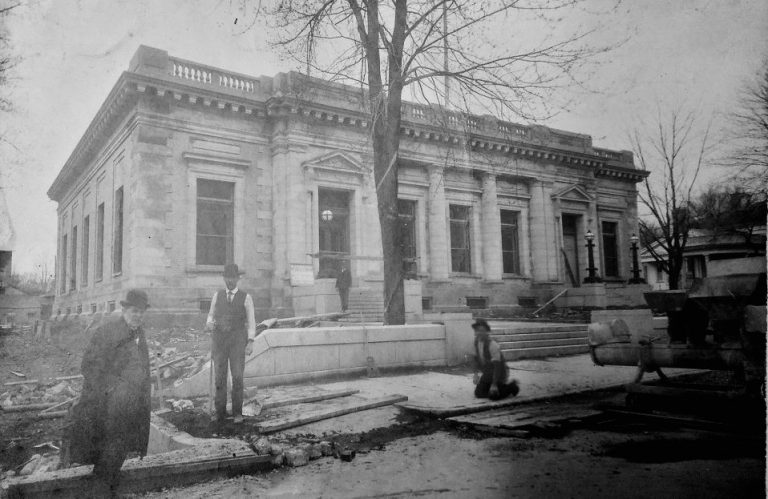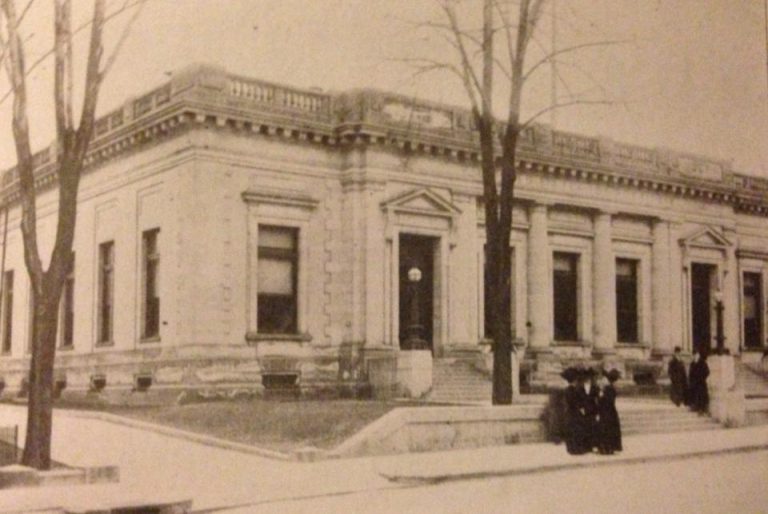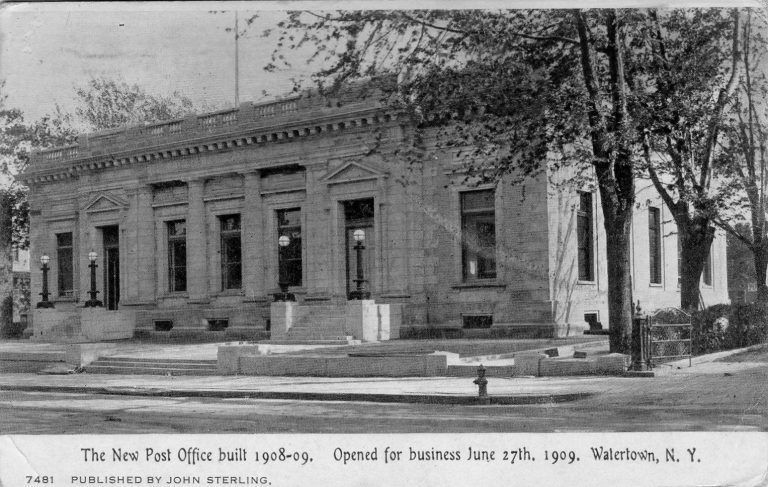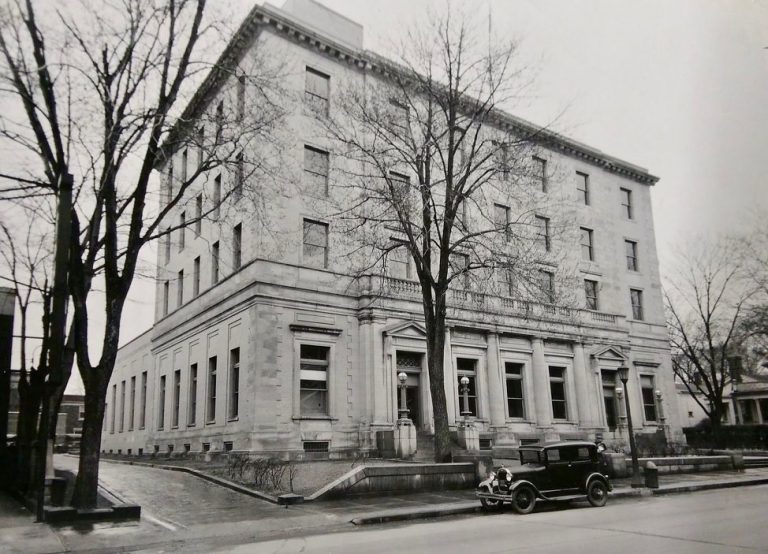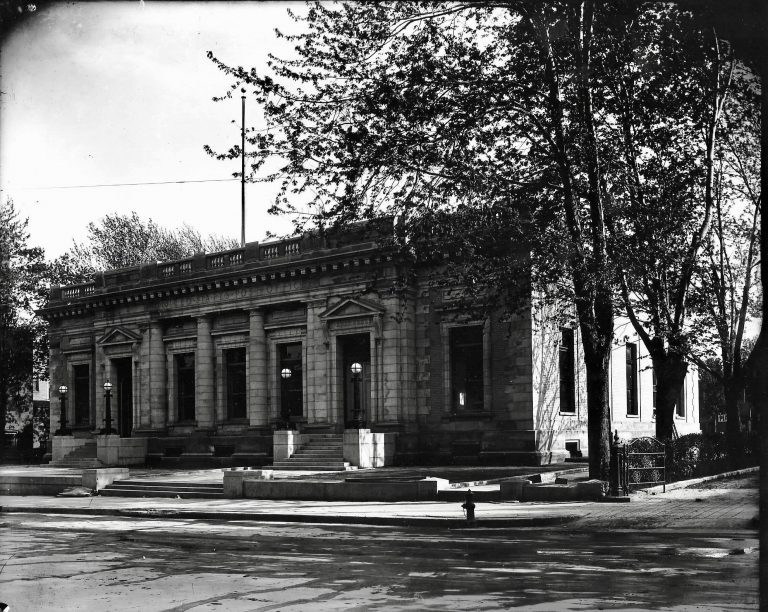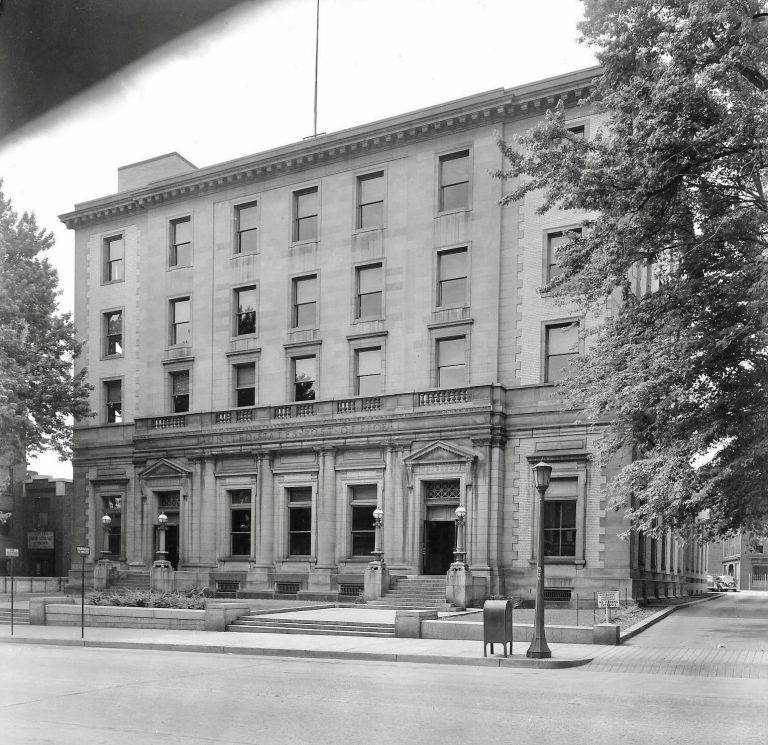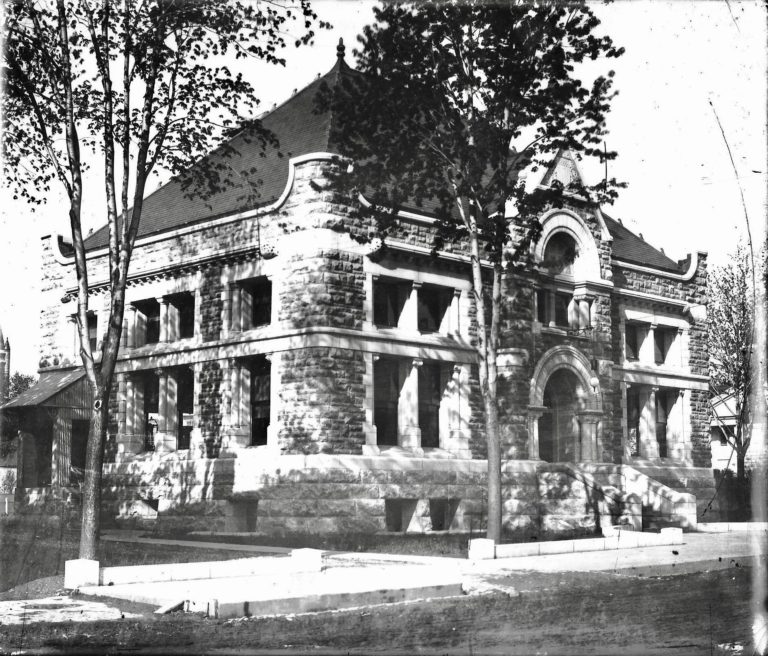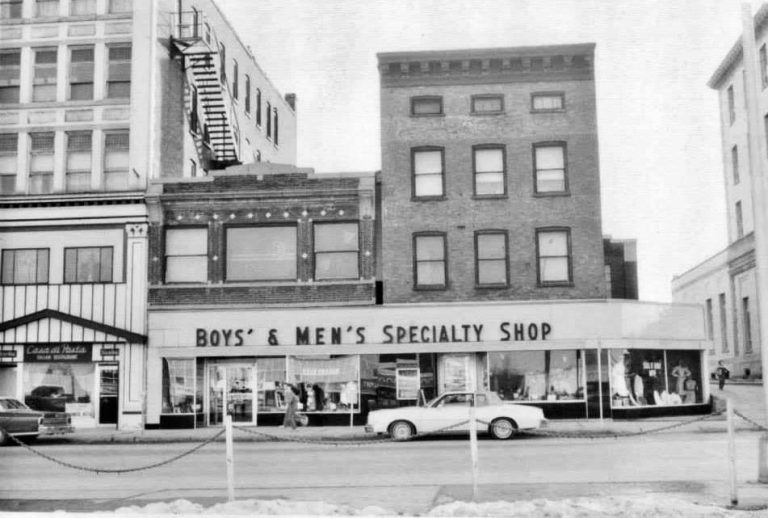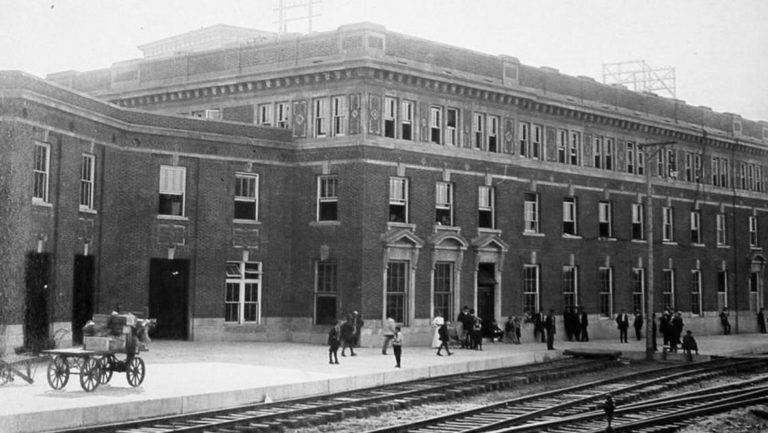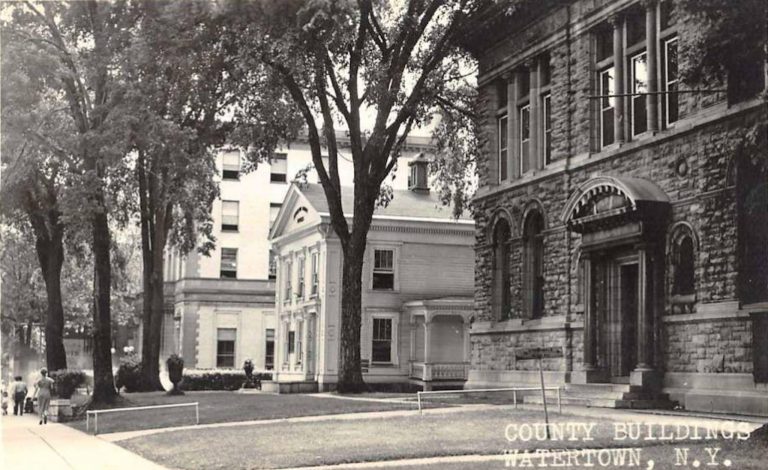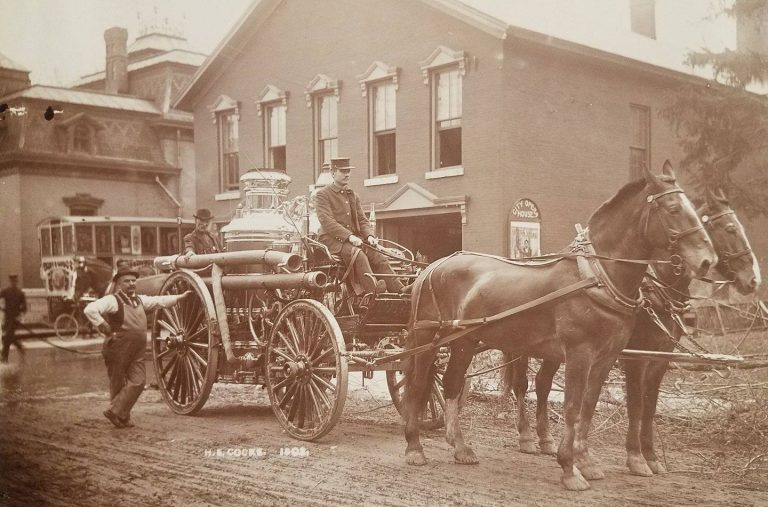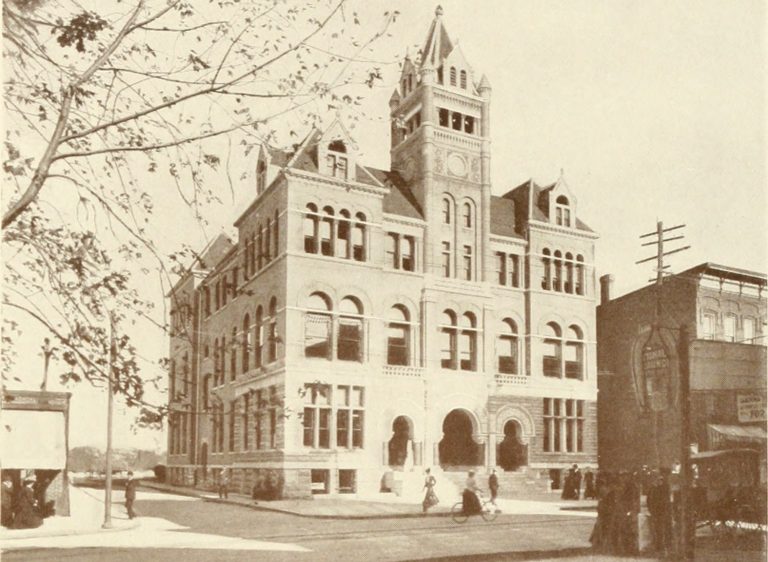Just like its predecessor, the second Watertown Post Office outgrows its space too soon
The second Watertown Post Office would see an appropriation in the public buildings bill on behalf of Congressman Charles L. Knapp from Lowville a mere 13 years after the city’s first post office was opened in 1892. $77,000 was the requested amount, claiming the present 13-year-old building was in unsafe and inadequate condition. During that period, the city’s population would grow by between 8,000 – 10,000 during its two most significant periods between 1890 (14,725) and 1900 (21,696) and again between 1900 and 1910 (26,730.)
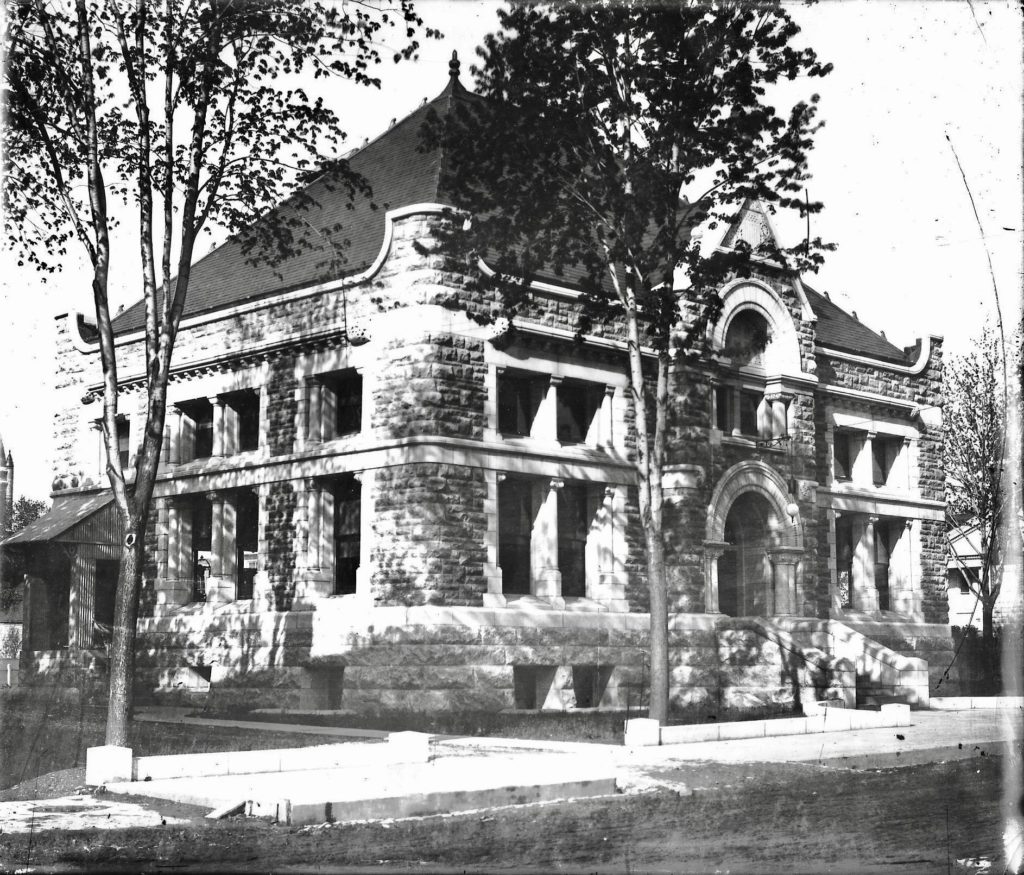
Work was expected to begin on the new post office next to the Roswell P. Flower mansion around the first of July 1907, though Postmaster Robert J. Buck had not yet received the new plans as of the middle of May. The current post office would need to be evacuated and torn down – later decided to be re-assembled on the corner of Arcade and Stone Streets with an additional floor added. Incidentally, the private residence of Orren G. Staples, which occupied the space previously, was also moved to a new location at 171 Mullin Street.
The former post office would eventually become home to the Elks Club for several years and most recently sold in April 2022 for $245,000, nearly $80,000 under the city’s total assessment. Upon vacating the post office, the function would move temporarily to the Odd Fellows’ Temple, which was opposite where the building itself would be reassembled on Arcade and Stone Streets.
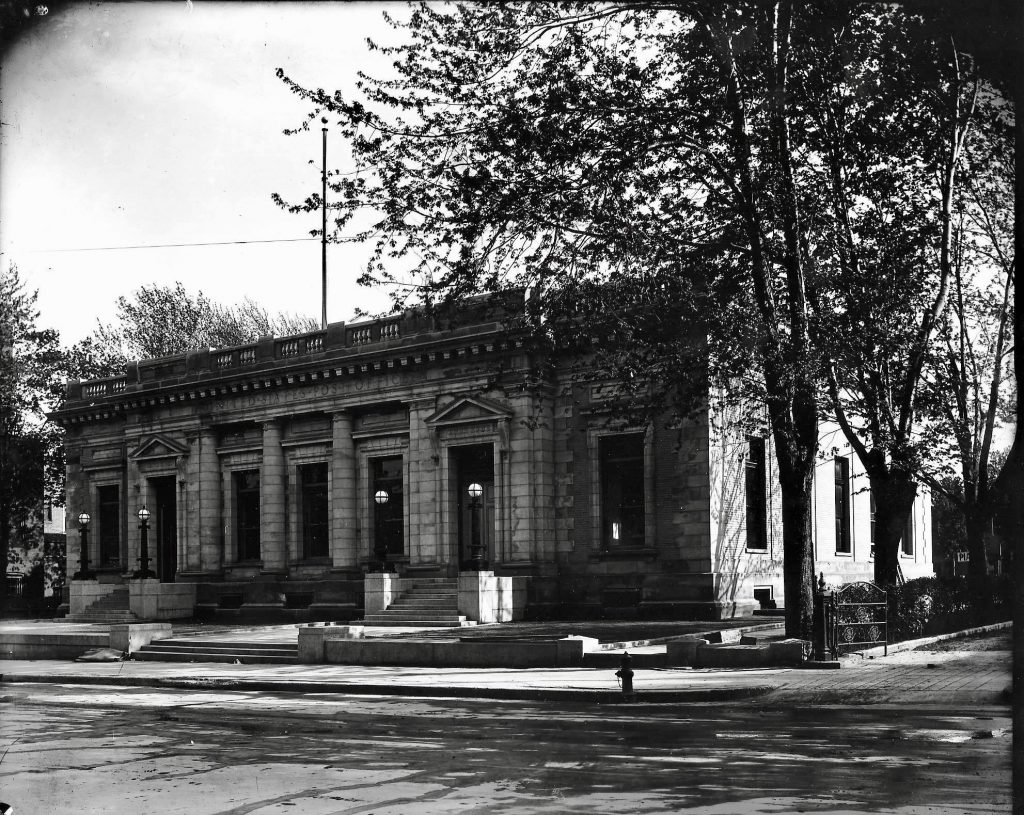
By August 1907, the Chamber of Commerce would object to the architectural plans submitted by the federal government, stating that the last Congress did not fully know the requirements or consider the conditions of the climate. Most specifically, the prior post office’s roof allowed snow and ice to collect in the gutters, allowing water to get into the walls and causing the marble to push away from the brick.
A committee consisting of well-known local architect D. D. Kieff, Henry E. Baker, and Henry Eager would be formed to discuss the objections with Congressman Knapp. This would explain the roof shape change when the old post office was reassembled in its new location.
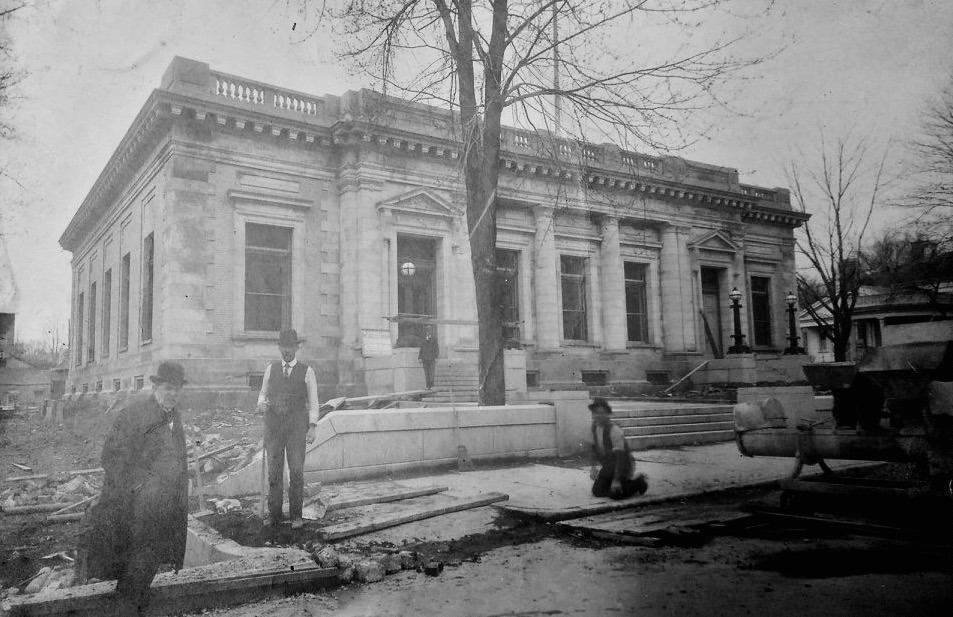
After Postmaster Buck and Congressman Knapp traveled to Washington, D.C., to discuss the issues with the federal architect, the changes would be accepted. The project was back on track in the spring of 1908 with minor changes to where exactly with relations to the street it would sit.
By September, work would begin on the roof with the walls partially completed, with the expectation that Thanksgiving would fully enclose it with the interior work conducted during the winter months. As work continued into April of 1909, it was hoped the second Watertown Post Office would be opened in July.
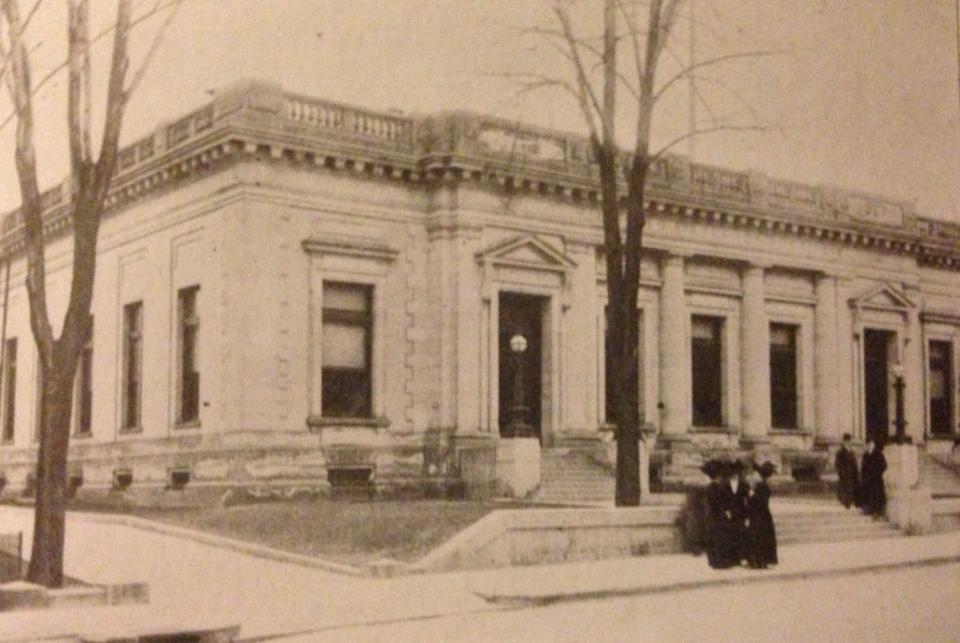
On June 26th, the Watertown Daily Times would report that the second Watertown Post Office would be moved into the following day, a Sunday, from its temporary quarters—
As the bell in the tower strikes the hour of 1 tomorrow afternoon, Odd Fellow’s Temple will cease to exist as a postoffice and will be merely the Odd Fellows’ Temple. At the same hour the magnificent new structure in Arsenal Street at the site of the old postoffice will be formally opened as a federal building. For nearly two years Odd Fellows’ Temple has done duty as a postoffice and thousands of letters have passed its portals.
The new postoffice is a splendid piece of architecture and one of which Watertown may well be proud. Many people have admired its exterior with its simple massive lines, its broad walks and its magnificent lawns. It has been pointed out with pride as one of the city’s finest buildings. Inside, it just as handsome and complete.

The New Post Office Undergoes Further Expansion
Nine years later, in July of 1918, the first rumblings of expansion were printed in The Times after two post office inspectors visited Watertown. The workforce, including mail carriers, was a topic of discussion as was providing adequate space for the increased workload (by 1920, the city’s population would be 31,285, over twice as much as it was thirty years before.)
The meeting would also include B. J. Minnier, general manager of the New York Air Brake, which, at least during the wartime effort, undoubtedly accounted for a significant percentage of the city’s growth. That growth would be exemplified by Christmastime when, with a week left before the holiday, the post office was on its way to its busiest season on record, with 400 bags of mail more than the previous year.

It would take over a decade before plans were finalized for adding three stories to the existing post office and space in the rear. The Times would state in their June 11, 1929 edition—
Washington, D. C., June 11—Plans for the new $275,000 Watertown postoffice were made public today by Representative Francis D. Culkin of Oswego, to whom they have just been delivered by the treasury department.
“The roof and the entablature of the existing building” declares the official statement received by Mr. Culkin today, “will be removed and three stories will be added to the existing building, together with a four story addition extending 72 feet to the rear, driveways extend to the rear of the site.
The existing brick and stone facing will be carried out in the new work. The central portion of the front elevation will be faced with stone the full height of the building; the exterior walls being finished with a stone entablature and parapet wall. Directly in back of the parapet wall will be a mansard roof covered with composition roofing.
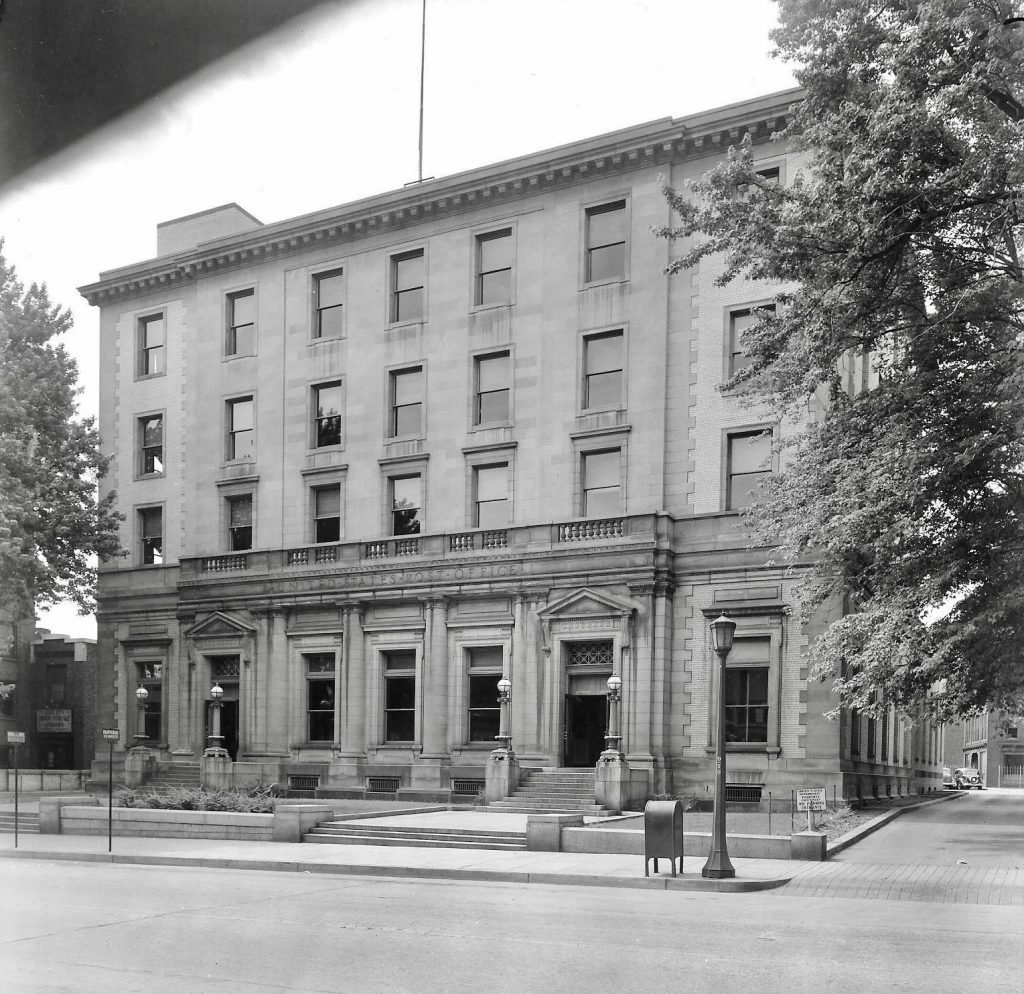
The second floor would be built to house an office for the postal inspectors and offices for court officials, jury rooms, witness rooms, files, and restrooms. The third floor would constitute much of the same minus the postal inspector’s office. In contrast, the fourth floor would house offices for various departments, treasury, customs, civil service, internal revenue, agriculture, army, navy, and restrooms. These would change before construction began, with the post office operations located on the primary (first) floor, which would be remodeled as well.
Bids initially submitted in August for the post office work were rejected, all considered too high. As a result, the federal architectures would make revisions to lower the costs with potential contractors needing to resubmit. The contract would be awarded to Fred R. Combs of Minneapolis, Minn., who reportedly had the lowest bid, by $10, over a firm from New York City.
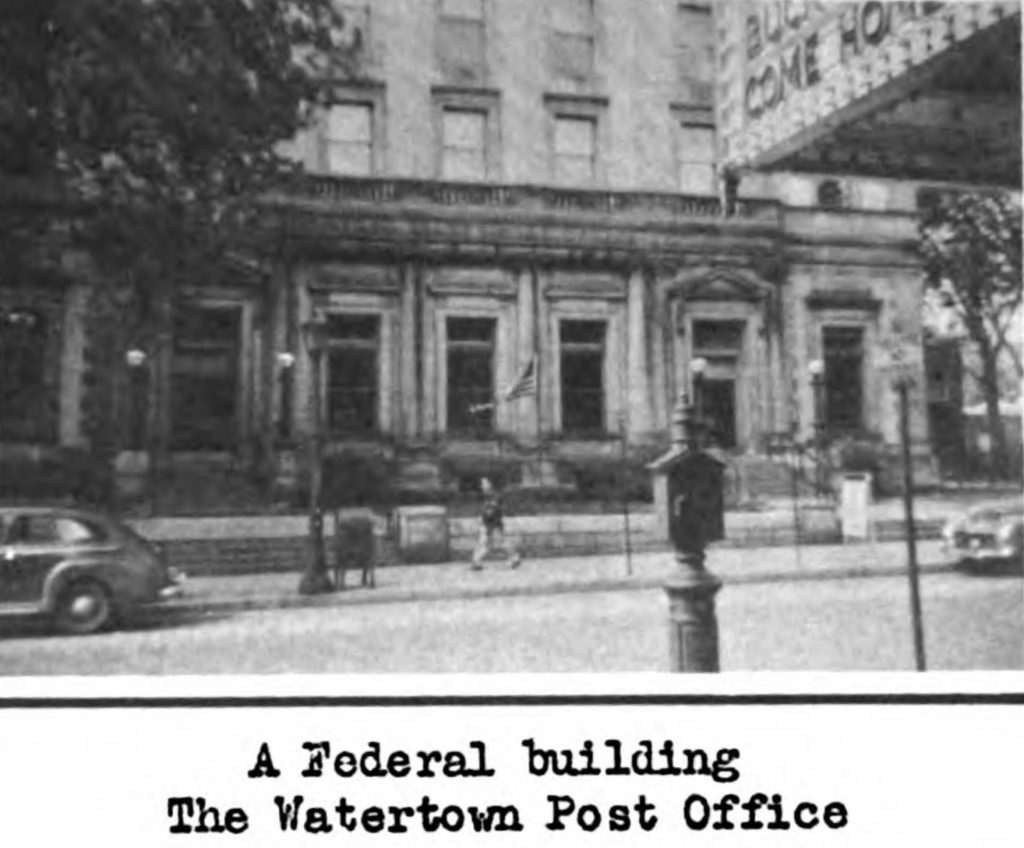
After approximately ten months of work through late fall of 1929 until the end of August 1930, work was still progressing but nearing completion on the building’s exterior – but it would take another seven months before the “new” post office would officially open on March 30, 1931. Hundreds of citizens would get a sneak peek of the facilities the day before opening (Sunday), seeing several modern conveniences, including four electronic clocks. Emma Flower Taylor would send the postal employees a large basket of cut flowers to greet them in their new quarters.
The structure would remain the city’s post office until the late 1980s when the current post office on Commerce Park Drive opened in c. 1989-1990. That wouldn’t be the end of the building’s expansion, however. In 2004, an entirely new addition comprised of three floors with a glass atrium adjoining the two structures into one was built, and its entirety became the Jefferson County Court Complex, with the offices moving from the Old Jefferson County Courthouse on the corner of Arsenal and Sherman Streets.
